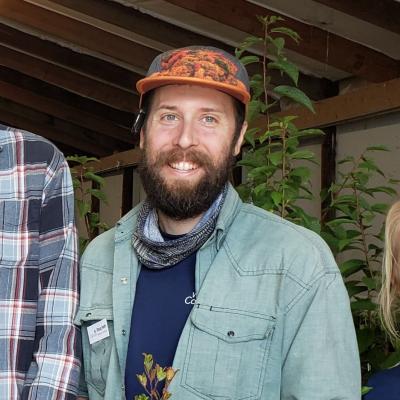Planting Instructions
A Tree & Shrub Planting Guide (PDF) is provided with orders by request and will be available at the pick-up distribution.
We also have other plant family guides:
- Berry Planting Guide (PDF)
- Raspberry Steps to Success (PDF)
- Fruit Tree Planting Guide
- Caring For Bare Root Fruit Trees (PDF)
- Apple & Peach tree pruning (PDF) - from StarkBros.com
More resources from other sources are below.
Selecting Trees & Shrubs:
Refer to the online store for details on species to help you select trees, shrubs or native plants best suited to your location based on soils, soil moisture/drainage, sunlight and desired uses. This MSUE "Finding Seedlings" article is a useful overview to sourcing bare-root stock and considerations.
In general, a good root system must be developed before trees reach their indicated growth rates. Most trees grow slowly for 1-3 years after planting or transplanting and more rapidly after their root system becomes developed.
Generally, trees with Rapid to Moderate growth rates reach 5-6 feet tall in 7-9 years. Moderate to Slow growth rates reach 5-6 feet tall in 9-11 years. Soils, weather, animal or other damage, weed and grass competition, and general care will also affect growth rates.
Care must be taken when selecting fall tree planting sites and soils for the best winter survival. Avoid planting in low areas that may collect water and freeze, damaging seedlings. Limit planting in heavier clay soils because they have a greater tendency to freeze and thaw, causing seedlings to be heaved out of the ground. Use mulch to help moderate soil temperatures and reduce heaving.
Species specific resources:
- Black walnut
Natural Resource Conservation Service documents & technical guides:
- Tree & Shrub Establishment - Michigan Guidance Document (PDF) - Excellent Technical Resource for all you need to know!
- Tree & Shrub Site Preparation - National Conservation Practice Standard (490) (PDF)
- Tree & Shrub Establishment - National Conservation Practice Standard (612) (PDF)
- Conservation Tree/Shrub Suitability Groups (CTSG) (XLSX) - a guide for selecting species best suited for different kinds of soil and for predicting height, growth and effectiveness.
Other Resources on Tree & Shrub planting:
- The Michigan Community Tree Species Selection Guide is thorough and updated!
- The National Wildlife Federation has a great Tree Planting and Care Guide (PDF).
- MSUE Tree Planting in Michigan (PDF) - From 1997 but still a good reference.
- Michigan Department of Natural Resources - Urban & Community Forestry and Recommended Trees List
- US Forest Service - Tree Owner Manual (PDF)
- MDOT - Plant A Living Snowfence (PDF)
- Plant a "Pocket Forest" with the Miyawaki Method: PocketForests.org
Protect & Maintain your plantings!
The WCCD offers many various Planting Aids to support establishment and protect your plantings from damage, the Planting Aids include tree shelters, weed mats, and more, and can be bought from our online store.
- Weed Mat Instructions (PDF)
- PennState article discusses uses, types, and costs of tree shelters.
- When & How to Build your own tree cages! - Article from Michigan Forest Pathways
- Why & how to protect tree trunks from lawn equipment (YouTube)
Avoid injury to trees!
Graphic source: Barbara Lucas, PocketForests.org
Urban Trees Resources
Looking for a certified arborist to look at your the health, insect or disease concerns of your tree? Check out our list of contractors or search for a certified arborist in your area on the International Society of Arboriculture website.
- Is My Yard Tree Worth Money? (Minnesota DNR)
- Marketing Yard Trees (Gretter, Louks, & Nelson, Indiana DNR, 2003)
- Tree Owner's Manual for Northeastern and Midwestern United States (U.S. Forest Service, 2008)
- Urban Forestry Consultants in Michigan
- Urban Wood Network
- Use of Urban and Development Site Trees for Lumber (Cassens & McKenzie, Purdue University, 2002)
Ask us!
Our Resource Specialist and Community Forester are here to support your and help answer your questions.

Matt DeJonge
Community Forester

Doug Reith
he/him
Resource Specialist





